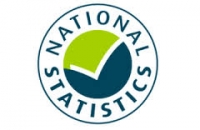
For September to November 2015, 74.0% of people aged from 16 to 64 were in work, the highest employment rate since comparable records began in 1971.
The unemployment rate for September to November 2015 was 5.1%, down from 5.8% for a year earlier.
It is not all good however
Real pay growth has fallen to its lowest level since February 2015, the Resolution Foundation said today (Wednesday) in response to the latest ONS labour market statistics.
The overall employment rate hit another record high (74 per cent), with strong growth recorded in both full-time jobs and self-employment, which is at its highest ever level (4.62 million).
However, the welcome news on employment was tempered by a further slowdown in the UK’s pay recovery, with real (regular) earnings growth falling to 1.9 per cent – as predicted earlier this week by RF. This is the slowest growth rate since February 2015 and below the pre-crisis average of 2.2 per cent.
The Foundation notes that with inflation now rising and set to increase further in the coming months, fresh impetus will be needed to maintain momentum in the UK’s pay recovery.
It adds that despite its impressive jobs record, the UK remains some way short of being a genuine world leader on employment. Further progress will be needed – particularly among BAME and disabled people, the low-qualified and other groups whose employment prospects vary hugely across the country – in order to make the Chancellor’s laudable goal of securing full employment a reality.
Laura Gardiner, Senior Policy Analyst at the Resolution Foundation, said:
“The UK jobs market continues to strengthen, with strong growth in both full-time jobs and self-employment.
“But while recent employment trends are very positive, the UK’s pay recovery risks running out of steam. Real earnings growth has fallen back below its pre-crisis trend, even while inflation remains close to zero.
“One of the key economic tests for 2016 is whether the early signs of a productivity recovery will strengthen enough to offset rising inflation and put the UK’s pay recovery back on track.”

Main points for September to November 2015
- There were 31.39 million people in work, 267,000 more than for June to August 2015 and 588,000 more than for a year earlier.
- There were 22.96 million people working full-time, 436,000 more than for a year earlier. There were 8.43 million people working part-time, 152,000 more than for a year earlier.
- The employment rate (the proportion of people aged from 16 to 64 who were in work) was 74.0%, the highest since comparable records began in 1971.
- There were 1.68 million unemployed people (people not in work but seeking and available to work), 99,000 fewer than for June to August 2015 and 239,000 fewer than for a year earlier.
- There were 919,000 unemployed men, 149,000 fewer than for a year earlier. There were 756,000 unemployed women, 89,000 fewer than for a year earlier.
- The unemployment rate was 5.1%, lower than for a year earlier (5.8%). It has not been lower since August to October 2005. The unemployment rate is the proportion of the labour force (those in work plus those unemployed) that were unemployed.
- There were 8.92 million people aged from 16 to 64 who were economically inactive (not working and not seeking or available to work), 93,000 fewer than for June to August 2015 and 172,000 fewer than for a year earlier.
- The inactivity rate (the proportion of people aged from 16 to 64 who were economically inactive) was 21.9%, lower than for a year earlier (22.4%). The inactivity rate has not been lower since October to December 1990.
- Average weekly earnings for employees in Great Britain increased by 2.0% including bonuses and by 1.9% excluding bonuses compared with a year earlier.
1 comment
Leave a comment
Make sure you enter all the required information, indicated by an asterisk (*). HTML code is not allowed.
Join
FREE
Here










